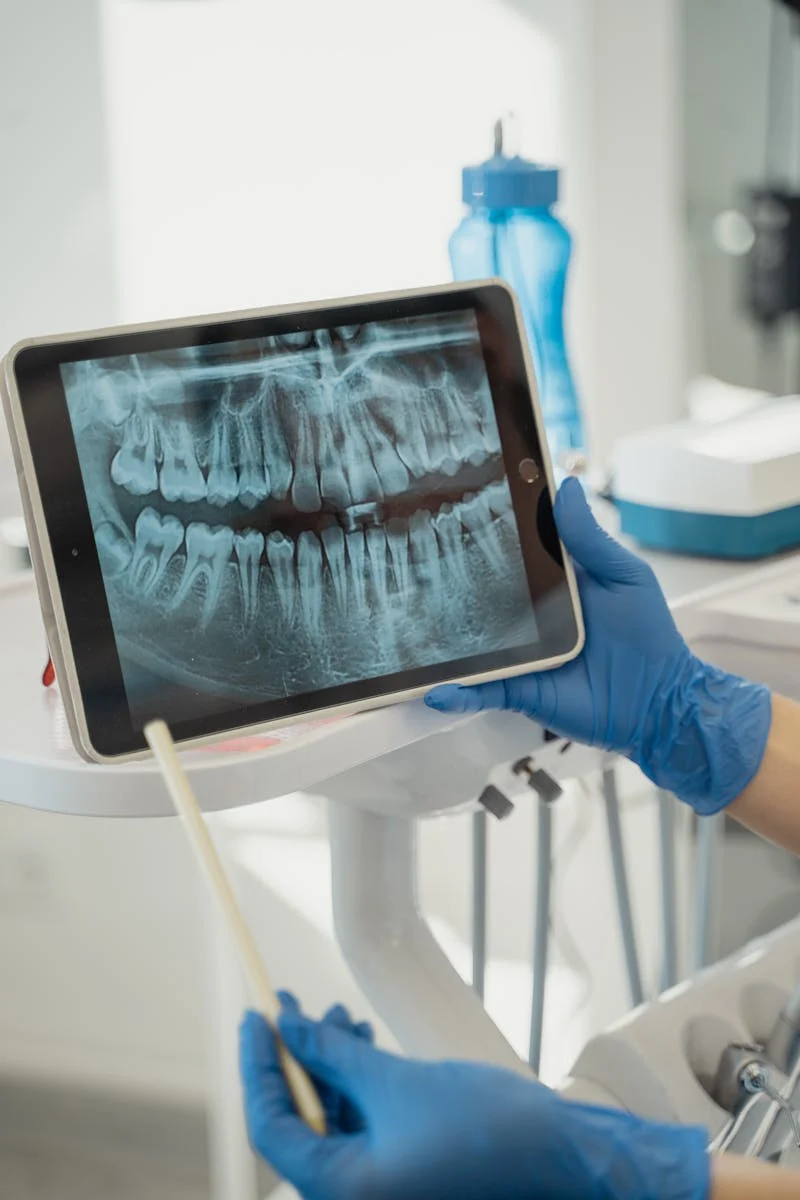
30 Jan How New Dental Technologies Are Improving Patient Care and Outcomes

Advancements in dental technology are transforming patient care, making procedures more precise, efficient, and comfortable. These innovations, from digital diagnostics to minimally invasive treatments, help dentists enhance oral health while improving patient experiences.
Digital Imaging and AI-Assisted Diagnostics
Traditional X-rays are being replaced by advanced digital imaging systems that provide clearer, more detailed views of teeth and gums. Cone beam computed tomography (CBCT) offers 3D imaging, allowing dentists to diagnose issues with unprecedented accuracy. Artificial intelligence (AI) is also making an impact by analyzing images to detect cavities, gum disease, and other conditions earlier than ever before. This leads to faster, more effective treatment plans.
Laser Dentistry for Painless Procedures
Laser technology is revolutionizing dental procedures by reducing discomfort and speeding up healing times. Soft tissue lasers are used for gum reshaping, removing infected tissue, and treating periodontal disease with minimal bleeding and swelling. Hard tissue lasers can prepare cavities without the need for drills, making procedures less stressful for patients.
3D Printing for Customized Solutions
3D printing is transforming restorative dentistry by enabling the on-site creation of crowns, dentures, and even dental implants. This technology allows many dentists to produce high-quality, custom-fitted solutions in just one visit, eliminating the weeks of waiting typically required for a dental lab to fabricate restorations. As a result, treatment time is reduced, and patients benefit from a perfect fit.
This dentist in Valley Stream NY adds that beyond efficiency, 3D printing enhances precision in dental restorations, ensuring a more comfortable and natural feel for patients. The ability to tailor each piece to an individual’s unique dental structure improves both functionality and aesthetics, making treatments like crowns and dentures more durable and lifelike.
Advancements in Custom Orthodontics and Digital Treatment Planning
Building off the previous section that touched on the use of 3D printing and scanning, advancements in digital orthodontics are also revolutionizing patient care by enhancing precision, efficiency, and comfort through custom treatment solutions. A leader in this sector is KLOwen Orthodontics with its cloud-based digital lab and 3D-printed custom brackets, allowing orthodontists to create fully personalized treatment plans. With innovations like the first custom metal self-ligating bracket, KLOwen is setting new standards in orthodontic care, making treatments more effective and tailored to each patient’s needs.
We did some deeper research into KLOwens exact process and found that Dobie Revolution Orthdontics, the first Connecticut orthodontist offering custom braces, lists some critical insight into the exact process behind custom braces on their website:
“Treatment begins with a 3D digital scan at our office, using the latest iTero 5D scanner. We will then use that scan to digitally design and create an ideal treatment plan using special indirect digital bonding (IDB) software. This software helps us choose the perfect custom brackets for a quicker and more effective orthodontic treatment plan. Your braces are then placed using 3D-printed trays that help ensure a more precise placement.”
Teledentistry for Greater Accessibility
Virtual consultations are making dental care more accessible, especially for individuals in rural or underserved areas. Teledentistry allows patients to consult with a dentist remotely, receiving guidance on minor issues, post-operative care, and preventive strategies. This technology also benefits parents seeking advice on their child’s oral health without the need for an in-person visit. Finding a trusted pediatric dentist Baltimore who utilizes modern tools can make a significant difference in a child’s dental experience.
Smart Toothbrushes and AI-Powered Oral Care
Smart toothbrushes equipped with AI and sensors are helping patients improve their daily oral hygiene. These devices track brushing habits, provide real-time feedback, and send data to a smartphone app. Some models even integrate with dental offices, allowing professionals to monitor at-home care and offer personalized recommendations.
Minimally Invasive Treatments with Biocompatible Materials
Advancements in dental materials are leading to more natural-looking and durable restorations. Biocompatible materials, such as ceramic and composite resins, closely mimic natural enamel while being safer and longer-lasting. Additionally, new remineralization treatments are emerging, helping to repair early-stage cavities without the need for drilling or fillings.
Robotics and AI in Dental Surgeries
Robotic-assisted dental procedures are enhancing precision in complex treatments like implant placement and orthodontic adjustments. AI-powered software assists in treatment planning, ensuring optimal results. These innovations reduce human error, shorten recovery times, and improve patient safety.
The Future of Dental Care
As technology continues to evolve, dental care will become even more patient-friendly and efficient. Innovations in regenerative dentistry, such as stem cell research for growing new teeth, hold exciting possibilities for the future. By embracing new dental technologies, both professionals and patients benefit from improved experiences, faster healing, and better long-term outcomes.
————–
The information on MedicalResearch.com is provided for educational purposes only, and is in no way intended to diagnose, cure, or treat any medical or other condition.
Some links are sponsored. Products and services are not tested, warranted or endorsed.
Always seek the advice of your physician or other qualified health and ask your doctor any questions you may have regarding a medical condition. In addition to all other limitations and disclaimers in this agreement, service provider and its third party providers disclaim any liability or loss in connection with the content provided on this website.
Last Updated on March 12, 2025 by Marie Benz MD FAAD
